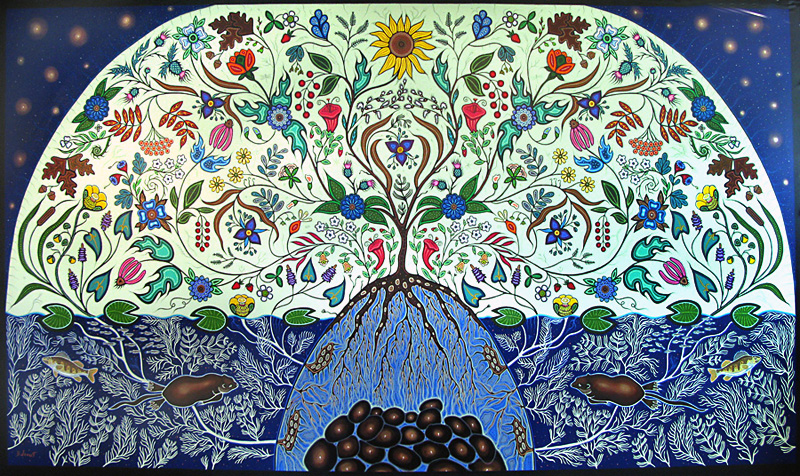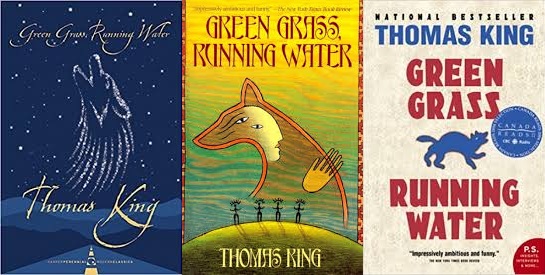Thomas King’s novel, Green Grass, Running Water, begins with the sentence “[i]n the beginning, there was nothing. Just the water” (6). While upon first reading the opening, a reader may be expected to believe that King is talking just about the creation of everything. However, once the initial reading of the novel is dealt with, and a reader goes back to the beginning, this sentence takes on new meaning.
Much of King’s novel is a work of allusion; many of the characters are caricatures of actual people – sometimes one person is split into multiple. What is therefore interesting about restarting King’s novel and rereading his opening line is that it feels almost as if it is an allusion to the events that happen near the end of the novel (spoiler: the dam breaks and water goes everywhere – though if you’re paying attention in class, you should know this by now). It isn’t just that this is a tale about the beginning of creation, but it is also the tale of new beginnings for characters such as Lionel, Alberta, and Charlie – sorry Eli.
June-Ann Greeley, an associate professor at Sacred Heart University in Religious and Theology studies, describes the sacred nature of water in Indigenous culture and how it is “a relentless force of enormous power that . . . [is] an instrument of purging and cleansing and thus renewal” (Greeley 159). King’s novel most definitely uses water in such a way as Greeley describes as we see through the epic conclusion to Eli’s story and hardship fighting against the courts about the dam that threatens his home. Though the bursting of the dam ends the conflicts that surrounded it by making them all moot points, there is also new hope that comes from it in Norma’s determination to spend her time living in the valley that Eli occupied.
Though less dramatic, the character Charlie is also given a new beginning through water, for it is rain that perturbs him from leaving his hotel room. This new beginning comes in the form of reconnection with his father.
Alberta also gets a renewal from the rain as she spends some time standing in the it outside the Dead Dog Café, ending up drenched. This is a seemingly cathartic moment for her, as seen in the next scene where she retells the story we readers have just read to Latisha (King 353). It is also in this scene where we get the first indication that Alberta has gotten her wish of becoming pregnant without the help of a man (King 352).
Greeley seems to summarize perfectly what King’s novel portrays. That “[w]ater symbolizes the origin of life, the assurance of fertility” (Greeley 159), as seen in Alberta’s case, as well as “be a quixotic agent of hardship and death” (Greeley 159) as seen in Eli’s.

“Honour Water” by Canadian Métis artist, Christi Belcourt.
Works Cited
Belcourt, Christi. Honour Water. christibelcourt, September 15, 2014, http://christibelcourt.com
/water/honour-water/. Accessed March 19, 2021.
CanLit Guides Editorial Team, The. “Green Grass, Running Water by Thomas King.” CanLit Guides, November 22, 2013, https://canlitguides.ca/canlit-guides-editorial-team/green-grass-running-water-by-thomas-king/. Accessed March 19, 2021.
Greeley, June-Ann. “Water in Native American Spirituality: Liquid Life – Blood of the Earth and Life of the Community.” Green Humanities, 2017, pp 156 – 179, https://digitalcommons.sacredheart.edu/cgi/viewcontent.cgi?referer=https://www.google.com/&httpsredir=1&article=1124&context=rel_fac. Accessed March 19, 2021.
King, Thomas. Green Grass, Running Water. Harper Perennial, 2012, eBook edition.
